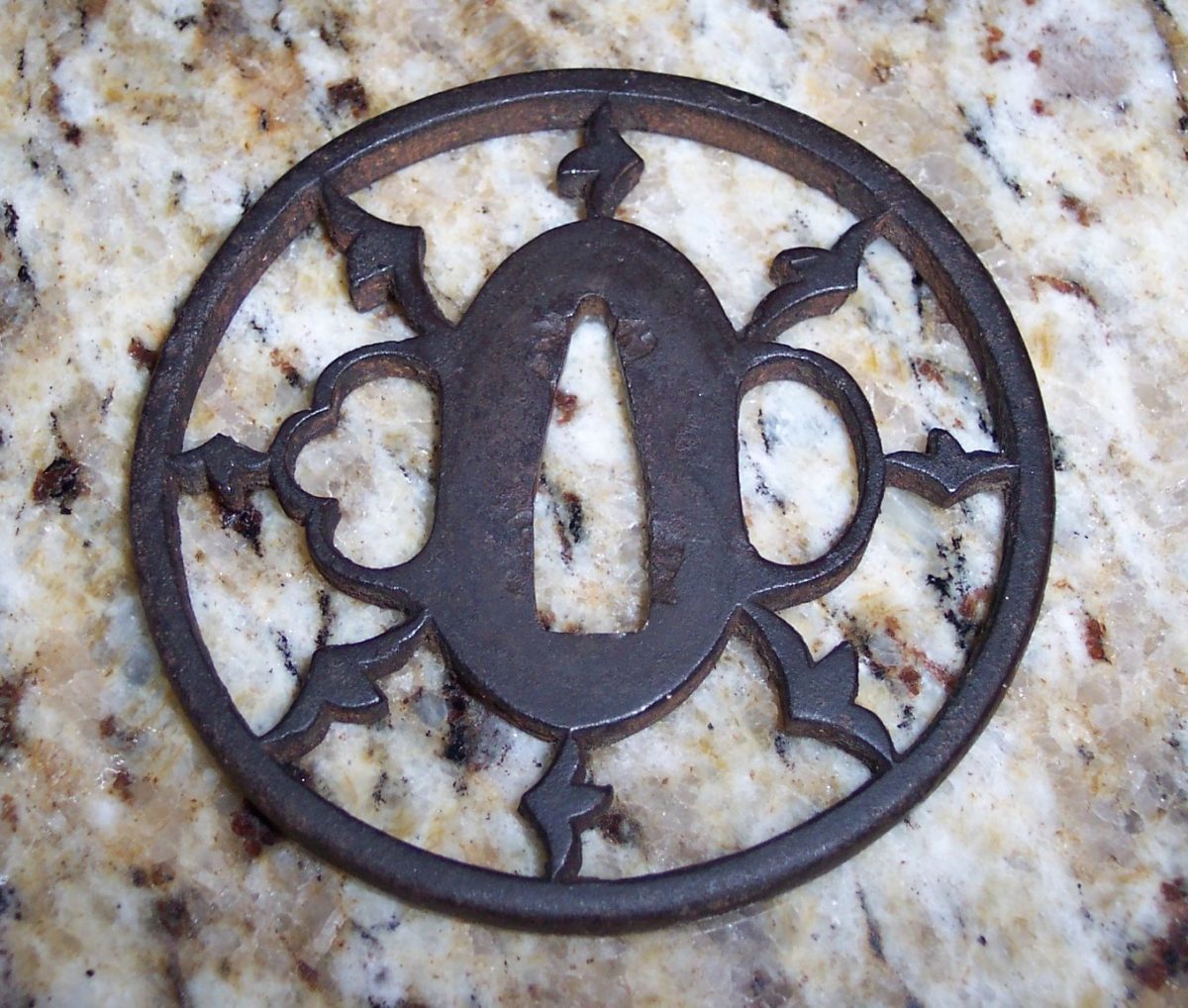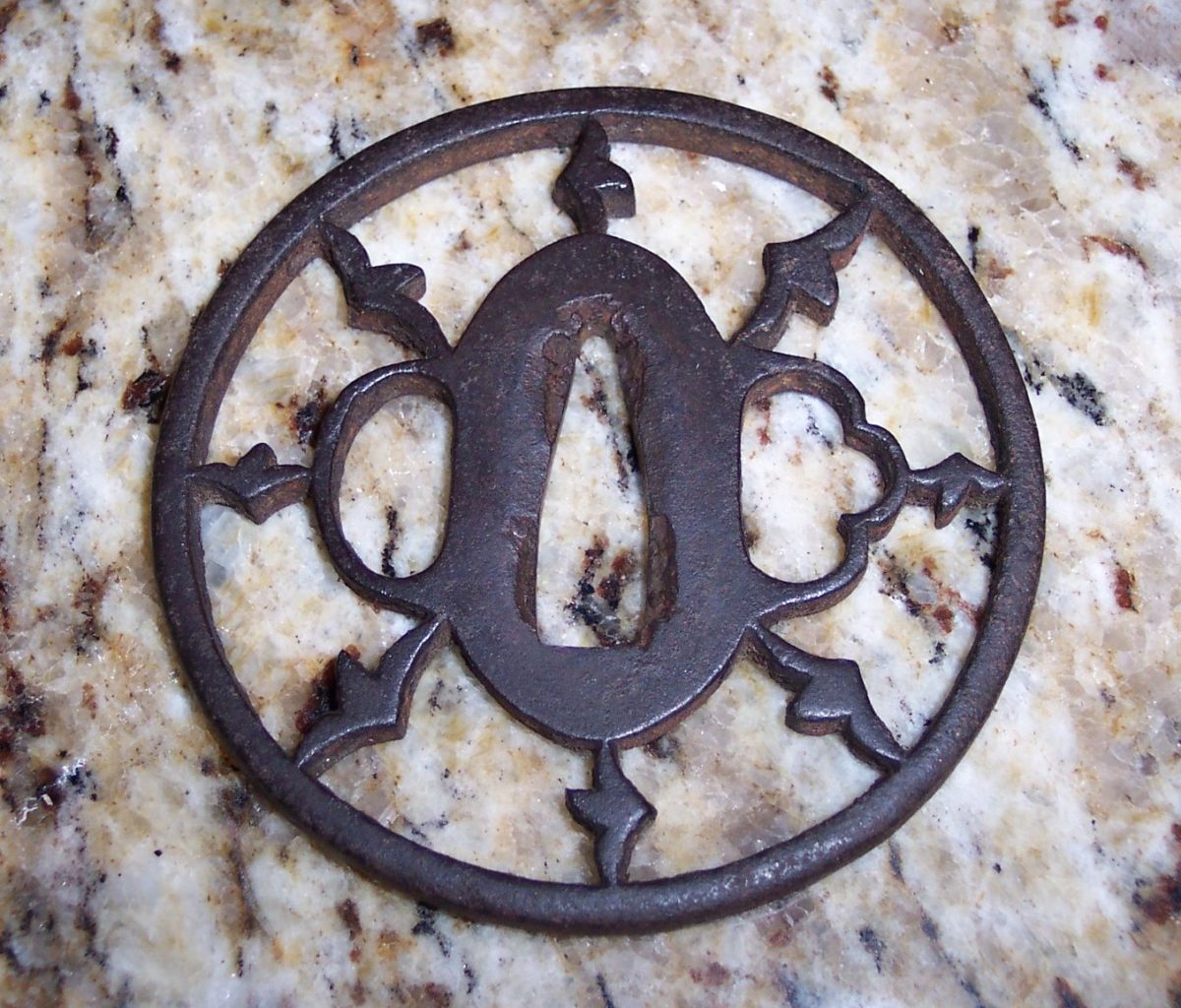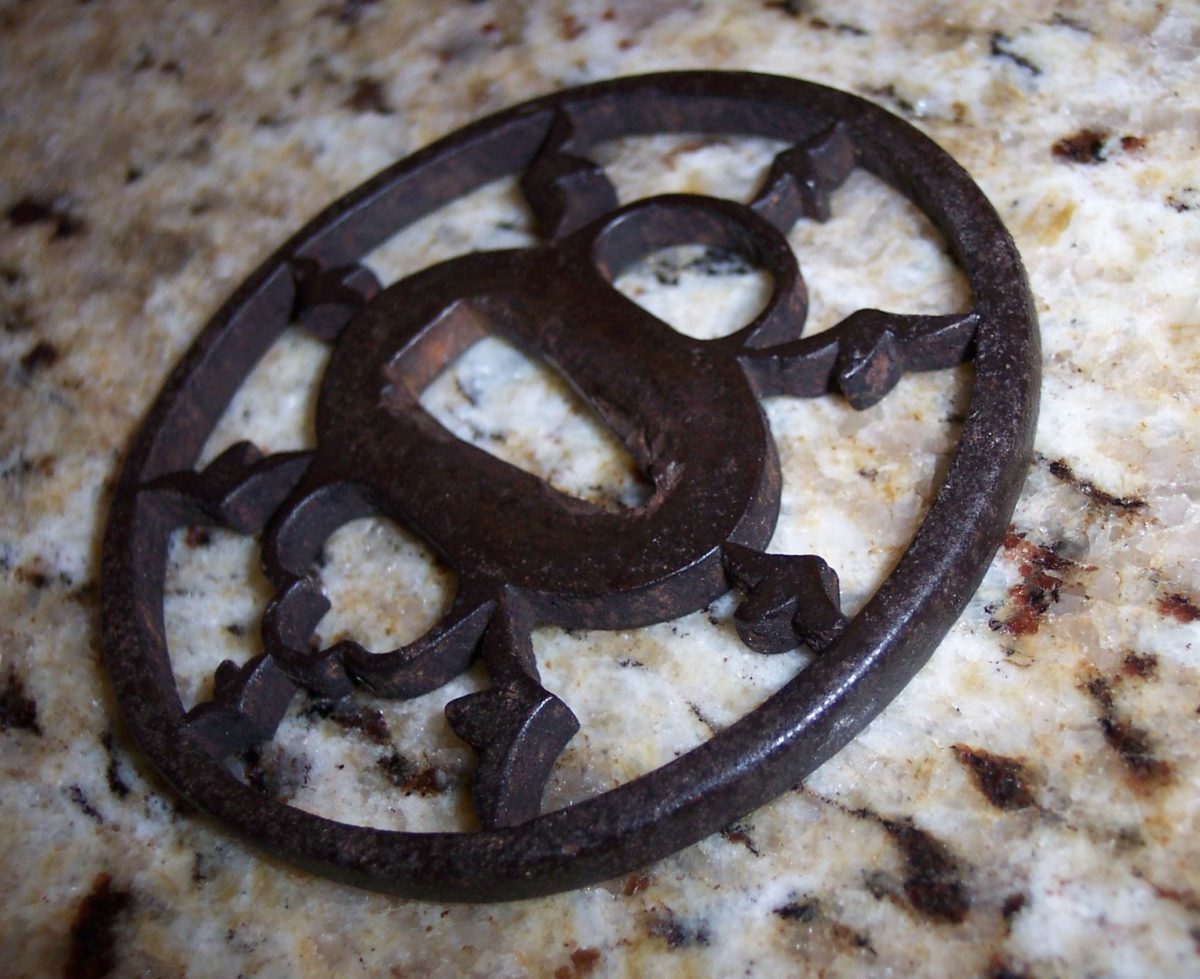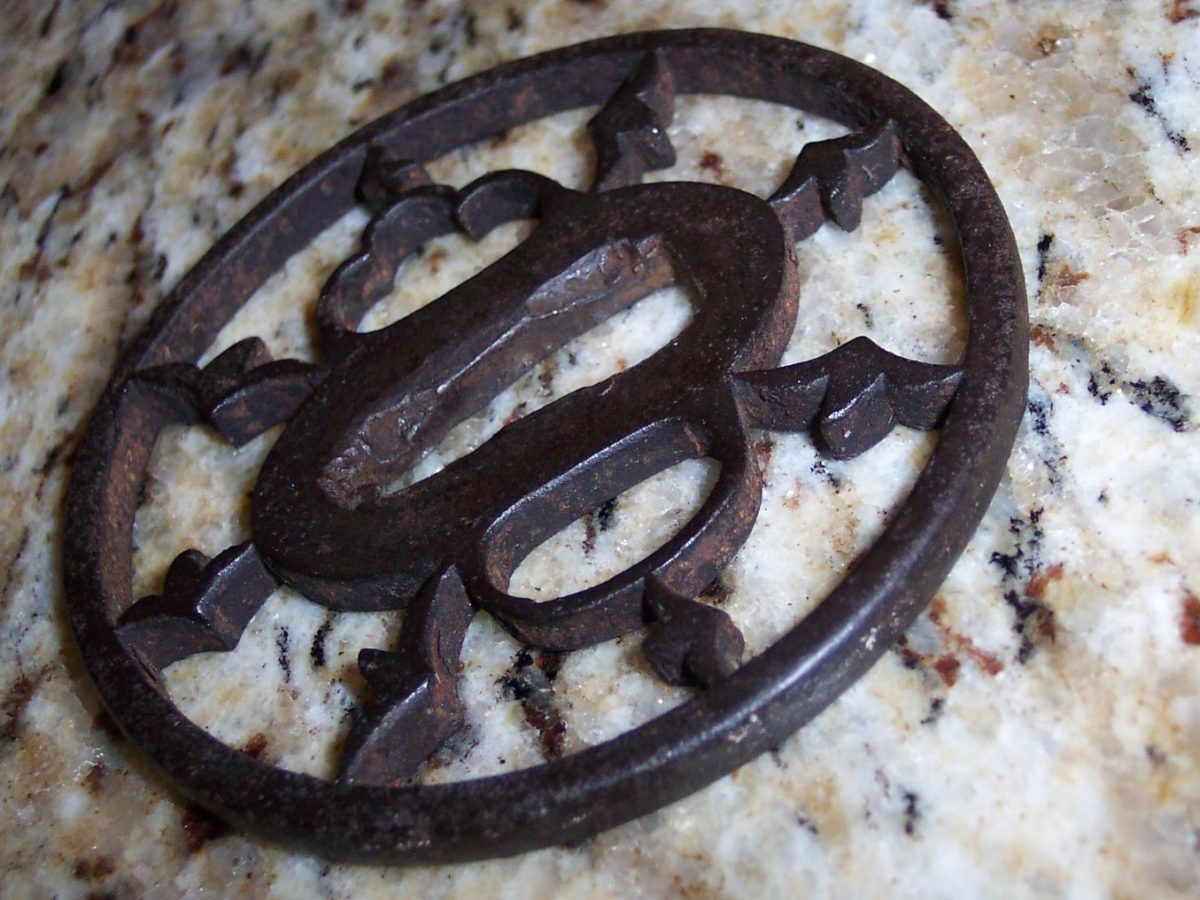Owari Sukashi Tsuba
Owari tsuba are named for the old province near present day Nagoya. Many, particularly in Japan, consider Owari tsuba to be the finest of the iron ji sukashi tsuba, best embodying the Samurai aesthetic. Others find them crude and unrefined. They are known for bold, symmetric designs, hard, well forged iron with conspicuous tekkotsu (high carbon content metal showing as smooth lumps in the rim). These tsuba were developed in the early Muromachi period with aspects of the style carried on into Meiji. After the early Edo period, however, the exciting quality of the iron is generally lost. Note that the Hoan, Yamakichibei, Kanayama, and other tusba making groups were also located in the Owari area, but are generally classified on their own, and not as part of the Owari Sukashi tradition. However, tsuba from these schools share certain a similarity in taste that is quite distinct from those made in and around Kyoto or Edo. -Jim Gilbert.
This tsuba is in the design of birds flying around the rim. This type of design seems to be a common theme in Owari tsuba. This is was a main kantei point in arriving at this attribution. Also, the iron seems to be of nice quality, as it show tekkotsu.
We appreciate such an appearance, as a proof of good ageing and good steel. We call it “TEKKOTSU”, it means iron bones in the literal translation. Tekkotsu does not appear on all the steel tsuba. A tsuba with tekkotsu is not common.
Sometimes we find it on the tsuba before 16th century. The Owari and Kanayama style tsuba are famous for its powerful appearance of tekkotsu.
Tekkotsu becomes rare coming close to the modern age. –http://www.ksky.ne.jp/~sumie99/tekkotsu.html
Diameter: 7.4 cm
Nakago Ana: 2.9 cm
Price: SOLD



